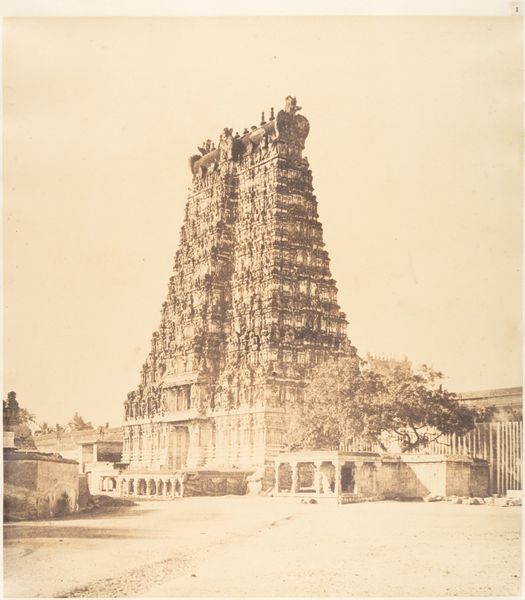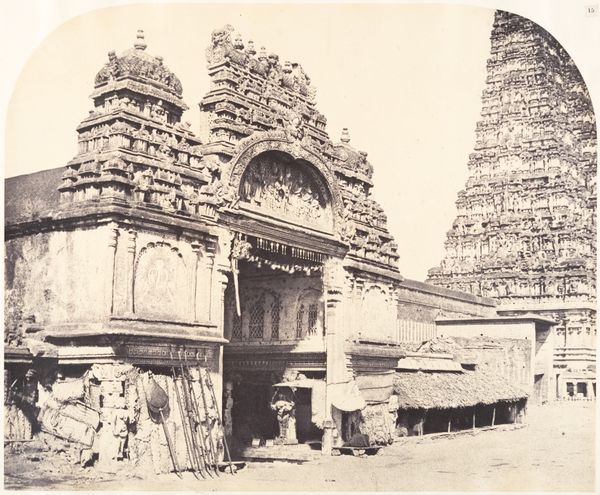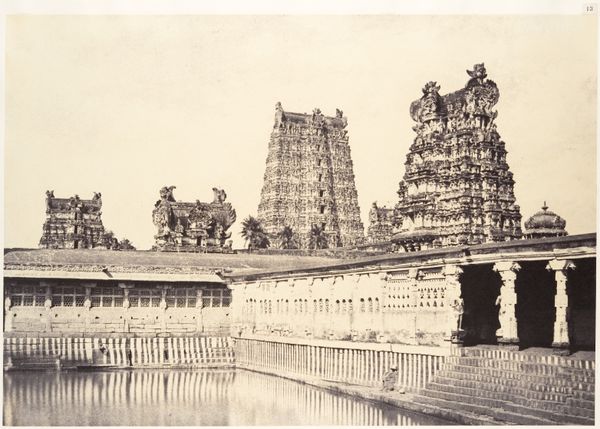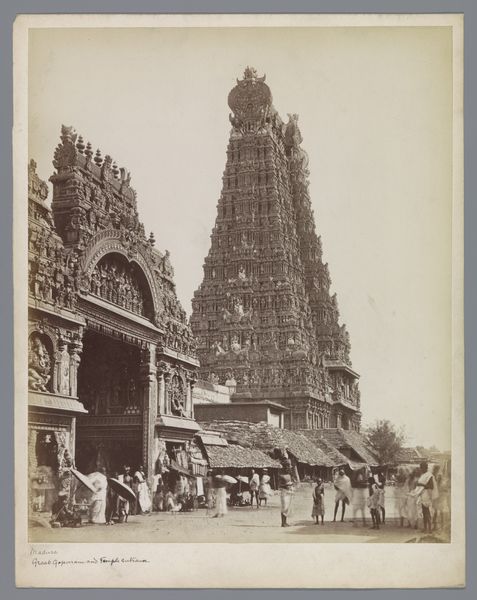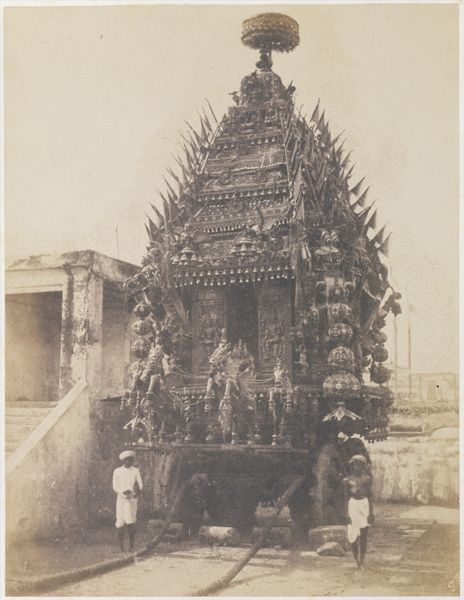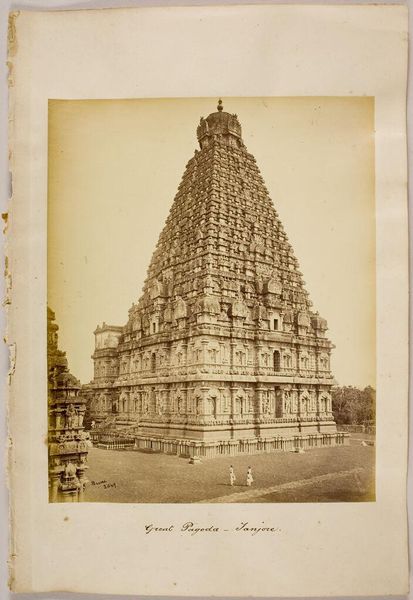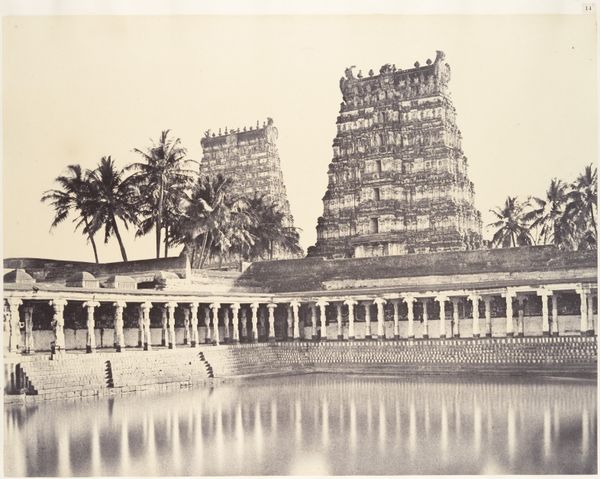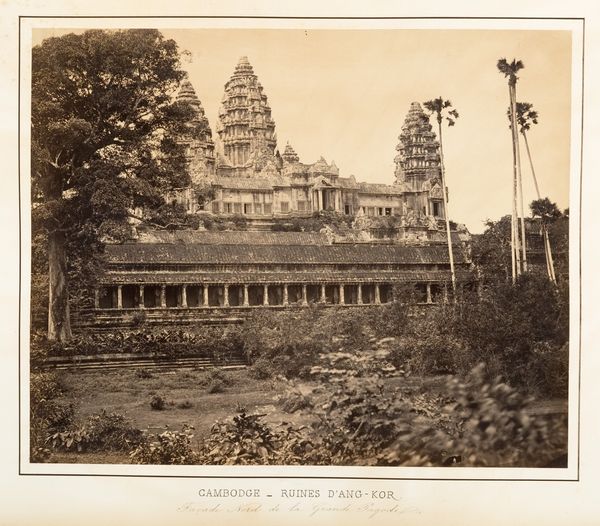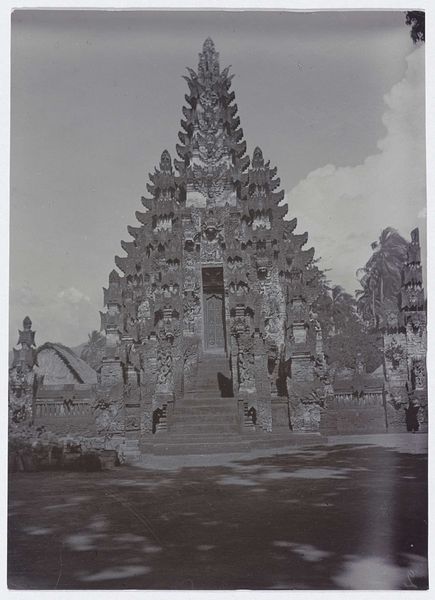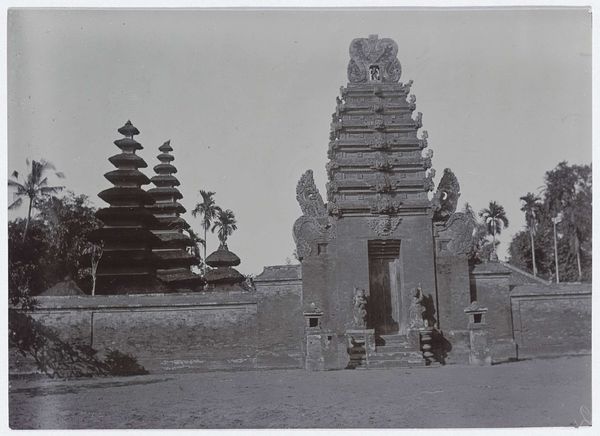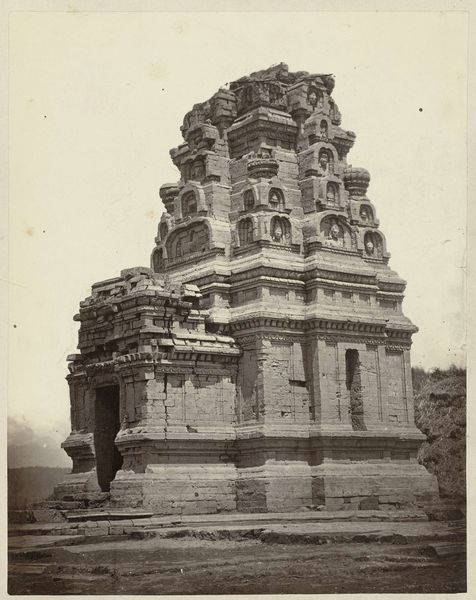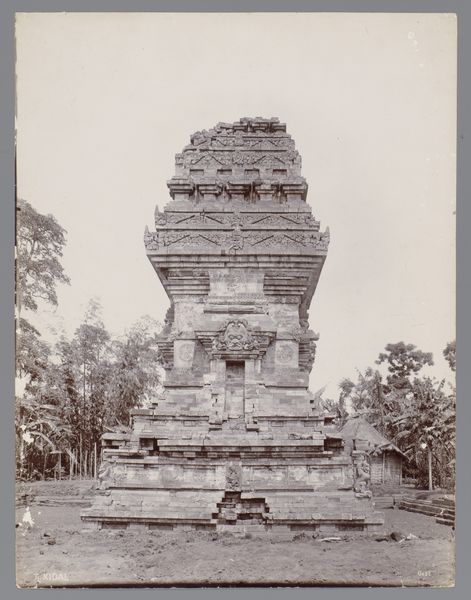
daguerreotype, photography, architecture
#
16_19th-century
#
asian-art
#
landscape
#
daguerreotype
#
photography
#
19th century
#
architecture
Dimensions: Image: 36.1 x 28.5 cm (14 3/16 x 11 1/4 in.) Mount: 42 x 39 cm (16 9/16 x 15 3/8 in.)
Copyright: Public Domain
Curator: This is Linnaeus Tripe’s “The Western Gopuram,” a daguerreotype taken in 1858. It captures a towering temple structure in India. What’s your initial take? Editor: Overwhelming! It feels less like looking at a building and more like gazing up at a mountain range made of…lace, almost. So detailed and intricate, and starkly imposing against that clear sky. There is such density. Curator: Tripe was a pioneer in photography in India, documenting architecture and landscapes for the British East India Company. This image showcases the Gopuram’s immense scale and detailed carvings, reflective of the company's interest in documenting their controlled territories. The politics of image making, here, seem undeniable. Editor: Exactly. Knowing that context does… complicate my feelings. The artistic accomplishment is evident but viewing it through a post-colonial lens, you have to wonder about Tripe’s intentions, who this was for and who benefitted from the act of recording this structure in such detail. Curator: Absolutely. These photographs circulated widely, reinforcing certain ideas about India and its cultural heritage for European audiences. Consider, too, how the very act of photographing, a relatively new technology, framed perceptions of this established culture. Editor: Right, because as stunning as it is, it also feels... distant. As though I'm not invited to connect with it on a deeper level. It becomes more of an artifact than a space of meaning and prayer. Like a trophy. That’s my gut feeling, anyway. But you cannot deny that mastery, despite its background. Curator: It's a photograph laden with complexities, technically impressive yet inseparable from the historical and political context of its creation. It prompts us to question how photographic representation shaped colonial power. Editor: Agreed. Art never exists in a vacuum, does it? It's a beautiful and troubling testament to a specific moment. Gives you a lot to think about. Curator: Indeed, a valuable opportunity to examine both artistry and its complex relationship with power.
Comments
No comments
Be the first to comment and join the conversation on the ultimate creative platform.
